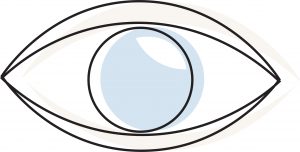About Allergic Conjunctivitis
 Allergic conjunctivitis is a common disease of the ocular surface. Most of the time though not always it is a consequence of allergic triggering factors. There are five main clinical forms of allergic conjunctivitis.
Allergic conjunctivitis is a common disease of the ocular surface. Most of the time though not always it is a consequence of allergic triggering factors. There are five main clinical forms of allergic conjunctivitis.
The most common form is acute and seasonal conjunctivitis (SAC). It is often associated with rhinitis and affects mainly children and young adults. 14.6% of European children aged 13 to 14 are affected.
Perennial allergic conjunctivitis (PAC) is another benign form of allergic conjunctivitis. It affects mostly young adults living in towns.
The severe forms are much less common: the least rare is vernal keratoconjunctivitis (VKC). It accounts for 3.2 per 10,000 individuals in Western Europe. Atopic keratoconjunctivitis (AKC) and giant papillary conjunctivitis (GPC) are close and rare entities.
Signs and symptoms of allergic conjunctivitis are largely dominated by ocular itching, to such an extent that some consider this symptom as mandatory to assess the diagnosis. Moreover patients often complain of watery eyes or red eyes. These symptoms are shared by all the clinical forms of allergic conjunctivitis but they are mostly consistent with benign forms (SAC and PAC). The diagnosis is easily made by the general practitioner or the paediatrician. When the itching is intense, bordering on eye pain, when secretions appear, with eyes glued in the morning, when light is poorly supported (photophobia), it is necessary to refer the patient to the ophthalmologist. In such cases the physician can observe swellings scattered in the inside of the eyelid (known as giant papillae on the everted tarsal conjunctiva) or inflammation of the corneal limbus (the junction area between the white and the coloured part of the eye), which is an area rich with inflammatory cells. The involvement of cornea (the lens which covers the coloured part of the eye) is called keratitis: it is evoked when the patient complains of photophobia or vision trouble. These medical complications can also occur in the 4th clinical form of allergic conjunctivitis which is called atopic keratoconjunctivitis (AKC).
The 5th clinical form, giant papillary conjunctivitis is a close clinical form of the 2 previous forms VKC and AKC). It is a rare consequence concerning wearers of soft contact lenses.
Diagnosis
Diagnosing allergic conjunctivitis is usually easy for the GP or the pediatrician. The help of the ophthalmologist is needed in severe cases to exclude implication of the corneal membrane. Concerning adults the condition can be misdiagnosed by the occurrence of dry eye syndrome. Other conditions such as ocular rosacea, blepharitis can also mimic some signs of allergic conjunctivitis.
The allergist should be required in cases of seasonal and acute allergic conjunctivitis (SAC), especially if occurring circumstances are always similar (for instance in a particular place or in a precise season or after contact with any pet). In these cases immediate reactions to allergens are implicated. They are investigated through prick-tests and serum specific IgE dosages. In addition a conjunctival provocation test can be performed. In seasonal cases pollens are frequently involved, as well as moulds. Pet dander and mites are more frequent in recurrent SAC. PAC is a very good indication of allergic investigation, even if non specific triggers are suspected. House dust mites and other perennial allergens could be involved. VKC and AKC require specialized investigations targeted towards allergens responsible for immediate and non immediate hypersensitivity reactions. Regarding that non immediate reactions, drugs and additives could be investigated on through patch-tests. As far as GPC is concerned it requires no allergic investigation but at least avoidance of soft lenses. It is appropriate to remember that in all of these cases, allergic triggers can be associated to various co morbidity factors such as dry eye, refraction troubles, and psychological factors.
Management
Management of allergic conjunctivitis depends on the clinical form involved. Simple means include artificial tears, physiological serum drops. The therapeutic means are dominated by antihistamines and antidegranulation drugs. These medications are available as local eye drops and sometimes as oral medication. They are really safe except if repeated use ends up in leading to non immediate reactions to additives. Prescription of steroid drops is reserved to the ophthalmologist. Surgery is sometimes required in complicated forms of severe allergic conjunctivitis (VKC and AKC).The allergist can add avoidance measures to this panoply as well as an allergenic hyposensitization in more specific cases.
Coping
Quality of life can be dramatically altered even in benign cases of allergic conjunctivitis.
Follow the following recommendations:
- If a specific allergy is identified and the source may be avoided, try to do so
- Use saline serum or artificial tears to lubricate the eye and help remove particles and allergens
- Protect your eyes with eyeglasses and sunglasses
- Keep your eye drops in the fridge; if they are cool, they alleviate symptoms quicker!
- Avoid scratching your eyes, especially before applying your drops because they will initially irritate your eyes further.
To conclude let’s retain that most allergic conjunctivitis are benign and can easily be cured by the general practitioner. The recourse to the allergist appears to be necessary in dealing with persistent and recurrent forms.
